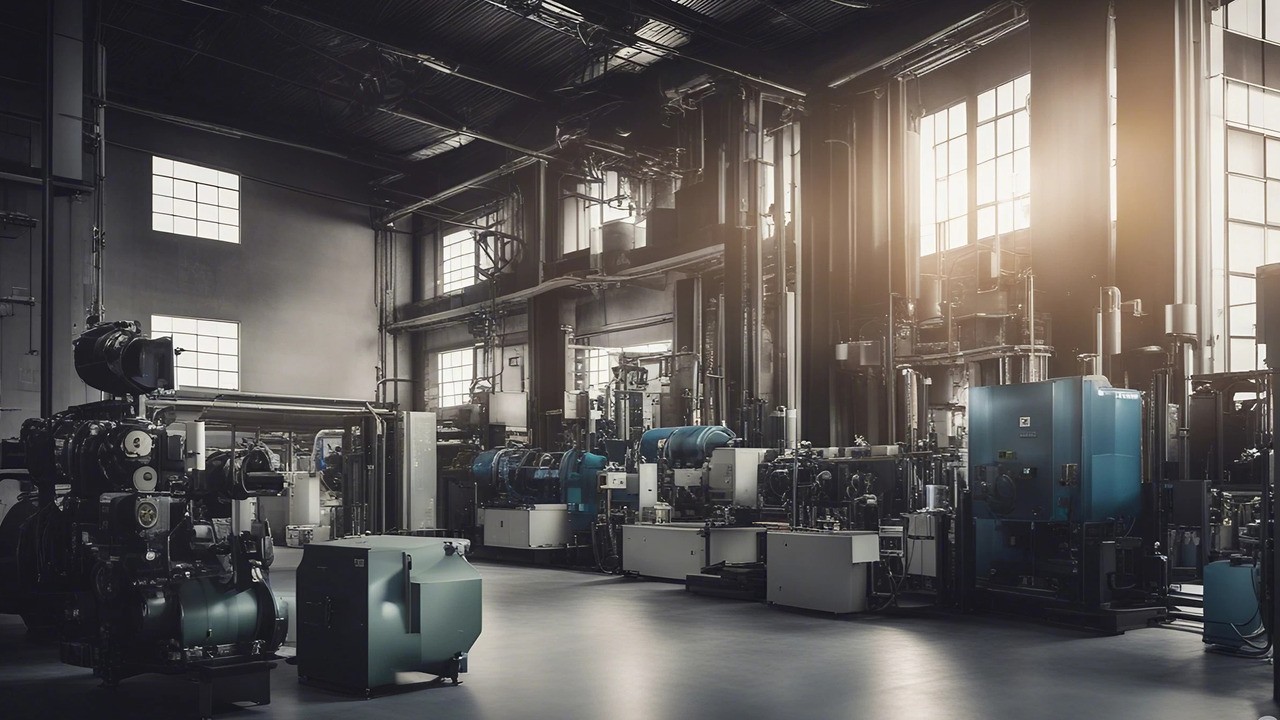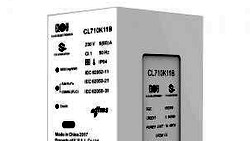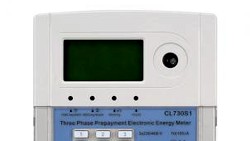In industrial applications, maintaining high energy efficiency is crucial for reducing operational costs and minimizing environmental impact. One of the key factors that affect energy efficiency is power factor. Power factor correction is a technique used to improve power factor and optimize energy consumption in industrial settings. In this article, we will explore the concept of power factor, the importance of power factor correction in industrial applications, and the various methods used for power factor correction.
The article is for informational purposes only and does not provide specific technical instructions. Consultation with experts and thorough analysis with dedicated equipment are recommended for the implementation of power factor correction methods.
Understanding Power Factor
Power factor is a measure of how effectively electrical power is being utilized in an electrical system. It represents the ratio of real power (measured in kilowatts, or kW) to apparent power (measured in kilovolt-amperes, or kVA). In simpler terms, power factor indicates how efficiently electrical energy is being converted into useful work.
In an ideal system, where all the electrical power is used for productive work, the power factor is 1. However, in real-world scenarios, power factors are deviating from this ideal value. This deviation occurs due to the presence of reactive power, which is caused by certain electrical components such as inductive devices (e.g., motors, transformers) and capacitive devices (e.g., capacitors).
When the power factor deviates from 1, it introduces inefficiencies in the electrical system. A low power factor means that a portion of the electrical power is being wasted as reactive power, which does not contribute to useful work.
The impact of low power factor
Low power factor in industrial applications not only impacts energy efficiency and system performance but also results in financial losses due to additional charges imposed by utilities. Utilities often apply penalties or charges to industrial customers with low power factors. These charges are typically based on the difference between the actual power factor and a predetermined threshold set by the utility. As a result, industrial facilities operating with low power factors face increased electricity bills, further straining their operational costs.
The additional charges levied by utilities serve as an incentive for industries to improve power factor and enhance energy efficiency. By implementing power factor correction measures, such as installing capacitor banks or employing active power factor correction techniques, industrial facilities can reduce their reactive power consumption and improve power factor levels. This, in turn, helps to mitigate the financial impact of low power factor penalties.
Furthermore, the implementation of power factor correction not only helps to avoid the financial implications of penalties but also offers significant long-term cost savings. By enhancing the power factor and minimizing reactive power demand, industrial facilities can streamline their energy usage, resulting in optimized energy consumption. Consequently, this leads to reduced electricity bills, as utilities often base charges for industrial customers on their overall apparent power consumption. It is crucial for businesses to recognize that low power factors can also attract penalties from utilities, making power factor correction a valuable investment.
Additionally, power factor correction can contribute to increased equipment lifespan and reduced maintenance costs. Improved power factor reduces the stress on electrical equipment, minimizing the risk of equipment failures and the associated repair or replacement expenses. This translates into long-term cost savings and improved operational efficiency for industrial facilities.

(symbol image, credit CLOU)
Power Factor Correction in Industrial Applications
The power factor limits for utilities can vary depending on the specific utility company and the regulatory framework in a particular region or country. However, it is common for utilities to impose penalties or charges for low power factor conditions that fall below a certain threshold. The most common power factor limit set by utilities is 0.9 or 0.95 lagging (or leading) power factor.
There are several methods used for power factor correction in industrial applications. The choice of method depends on factors such as the type of load, available space, and budget. The most commonly used methods include:
- Capacitor banks
Capacitor banks are the most popular and cost-effective method for power factor correction. They consist of capacitors that are connected in parallel to the electrical system. Capacitors provide reactive power, compensating for the reactive power drawn by inductive loads. Capacitor banks can be either fixed or automatic, depending on the load variations. - Synchronous condensers
Synchronous condensers are rotating machines that are connected to the electrical system. They provide reactive power by running at a leading power factor. Synchronous condensers are ideal for industrial applications with high and fluctuating loads. - Static Var Compensators (SVC)
SVCs are electronic devices that provide reactive power compensation. They consist of capacitors and inductors controlled by power electronics. SVCs are capable of providing rapid response and are suitable for applications with rapidly changing loads. - Active Power Factor Correction (APFC)
APFC is a method that uses power electronic devices to actively control the power factor. It continuously monitors the power factor and adjusts the reactive power compensation accordingly. APFC is particularly effective for applications with variable or nonlinear loads. - Hybrid Power Factor Correction Systems
These systems combine the benefits of capacitor banks and active power factor correction. They employ both passive and active elements to achieve accurate and efficient power factor correction, providing flexibility and adaptability to varying load conditions.
Implementing Power Factor Correction
Before implementing power factor correction, it is important to conduct a thorough power factor assessment and analysis. This involves measuring the power factor, identifying the main contributors to low power factor, and determining the appropriate correction method. Power factor assessment can be performed by qualified electrical engineers or energy management professionals.
When designing and installing power factor correction systems, several factors should be taken into account. These include load characteristics, available space, harmonic distortion, safety considerations, and future load projections. It is recommended to work with experienced electrical contractors or consultants to ensure the correct sizing, installation, and integration of power factor correction equipment.
Once power factor correction systems are installed, regular monitoring and maintenance are essential to ensure optimal performance. This includes periodic measurement of power factor, inspection of equipment, and detection of any abnormalities or malfunctions. Metering systems can be used to track power factor trends and identify areas for further improvement.
Avoid Over-Compensation
In the case of over-compensation in power factor correction, the power factor may change from lagging to leading (or vice versa). This occurs (in case of previous lagging) when the reactive power injected into the system, typically through the use of power factor correction capacitors, exceeds the actual reactive power demand of the load.
Over-compensation can introduce certain challenges and potential issues in the electrical system. Some of the consequences of over-compensation include:
- Voltage Swings
Over-compensation can lead to voltage levels rising above the normal operating range. This can cause voltage fluctuations or voltage surges, potentially affecting the performance and lifespan of electrical equipment. - Resonance
Excessive capacitance from over-compensation can create a resonant condition in the system. Resonance occurs when the reactive components of the system, such as inductors and capacitors, interact and cause higher currents and voltages at specific frequencies. This can result in equipment malfunctions or damage. - Excessive Currents
Over-compensation can lead to increased current levels, especially in systems with poor impedance characteristics. High currents can put additional stress on electrical components, leading to overheating, increased losses, and potential equipment failures. - Power Quality Issues
Over-compensation can affect power quality parameters such as harmonics and voltage flicker. It may introduce harmonics or exacerbate existing harmonics in the system, impacting the overall power quality and potentially disrupting sensitive equipment or processes.
Best Praxis for Power Factor Monitoring
Smart meters equipped with load profiling capabilities offer valuable insights into energy consumption patterns within industrial facilities. By capturing detailed load profiles, including voltage, current, and power factor measurements, these meters enable a comprehensive understanding of the power characteristics of individual machines or specific industrial processes.
Integrating these smart meters into an AMI system provides several advantages for industries. It allows real-time monitoring of power factor variations, enabling prompt identification of equipment or processes with poor power factor performance. This information facilitates targeted power factor correction initiatives, helping industries prioritize energy management efforts and reduce reactive power losses.
Monitoring power factor in each phase individually provides further advantages in the industrial context. By analysing phase-wise power factor data, industries can detect phase imbalances, identify potential issues, and implement corrective measures to enhance system efficiency and balance the load consumption. This ensures optimal utilization of electrical infrastructure and minimizes the risk of equipment failures or downtime.
Takeaway
Power factor correction plays a vital role in improving energy efficiency and optimizing electrical systems in industrial applications. By addressing low power factor, businesses can reduce energy consumption, lower electricity bills, and enhance overall operational efficiency. With the various methods available for power factor correction, it is important to assess the specific needs of the facility and choose the most suitable solution. Implementing power factor correction not only benefits the organization but also contributes to a more sustainable and environmentally friendly operation.
If you have questions regarding our smart meters with load profile capabilities or our AMI system solutions, don't hesitate to contact us. Our team of experts is ready to answer any inquiries you may have.
Editor's note: This article was originally published in September 2023 and has been updated for comprehensiveness.





All comments are moderated before being published. Inappropriate or off-topic comments may not be approved.